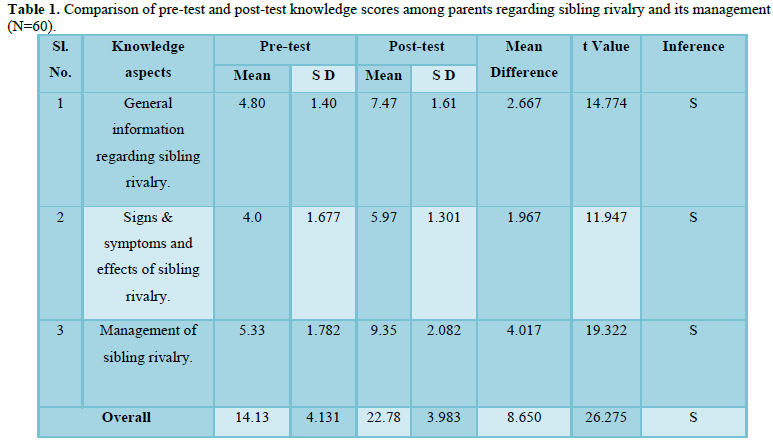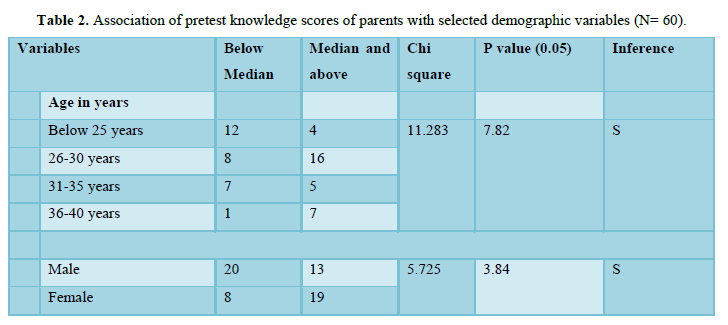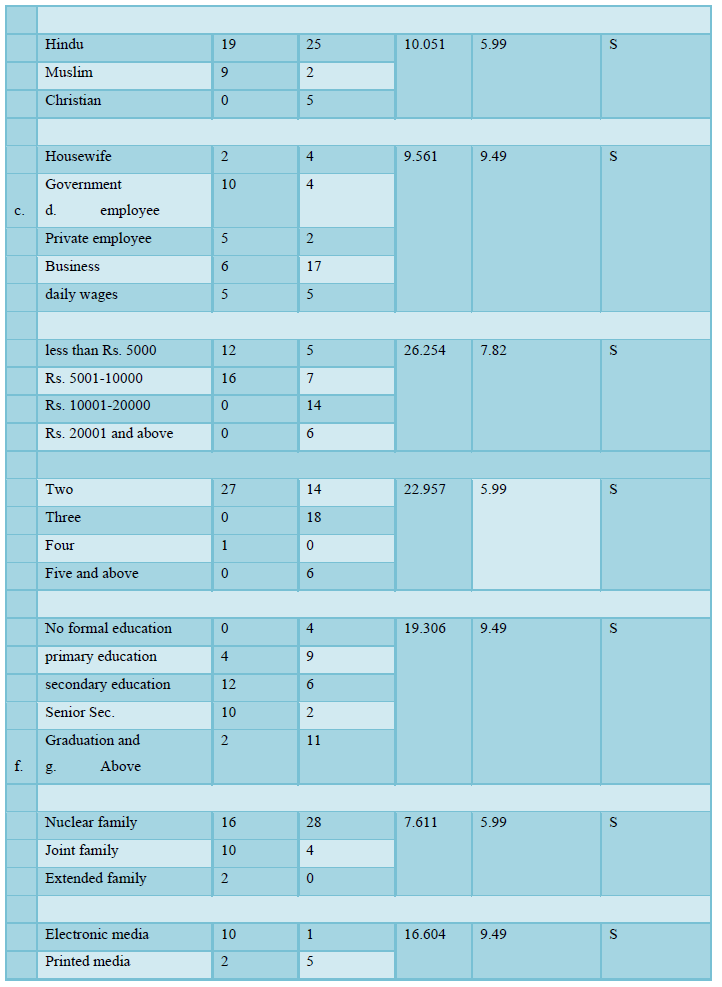1927
Views & Citations927
Likes & Shares
Parents can play a critical role in controlling sibling rivalry. The actions that parents take can either curb rivalry, or provoke it. Ideally want to teach children to be sharing and cooperative. One sibling gets more attention or love from parents is at the root of a lot of modern day sibling rivalry as well. Parents should balance the responsibilities of the sibling, protect the needs of each child, spends special time with each child on a regular basis.
A common competition exists between siblings in human families. The scarce resources are the time, attention, love and approval that the parents can give to each of their children. Looking at this situation in very simple terms, if the parents have only a certain limited amount of exclusive time to give to all their children, it is easy to see that if there is only one child in that family, all of the parent’s available time will be for that only child; if there are three children, then each child gets a third; if there are four, then each one gets a fourth of their time; and so on [1].
Keywords: Non-randomized effectiveness, Structured teaching programmed, Knowledge, Sibling rivalry, Management, Parent, Community
OBJECTIVES OF THE STUDY
1. To assess the existing knowledge of parents regarding the sibling rivalry and its management.
2. To evaluate the effectiveness of structured teaching programme on knowledge regarding sibling rivalry and its management among parents by comparing pretest and posttest knowledge scores.
3. To associate the pre-test knowledge of parents on sibling rivalry and its management with their selected socio-demographic variables.
ASSUMPTIONS
In this study, it is assumed that:
1. The parents may have basic knowledge regarding sibling rivalry and its management.
2. Structured teaching programme could be an effective teaching tool in improving the knowledge regarding sibling rivalry and its management among parents.
HYPOTHESES
H1: The mean post-test knowledge scores of parents regarding sibling rivalry and its management will be significantly higher than the mean pre-test knowledge scores.
H2: There will be a statistically significant association between the level of knowledge on sibling rivalry and its management among parents with the selected socio-demographic variables.
LIMITATIONS
· The sample size is limited to 60 parents.
· The period of study will be limited to one month.
· This study is limited to only one selected community area at Jaipur (Raj.)
REVIEW OF LITERATURE
1. Studies related to general information on sibling rivalry
A study was conducted on sibling jealousy and its relations to child and family characteristics in 60 families with a 16-month-old toddler and an older pre- school-age sibling. Sibling jealousy was elicited in social triads consisting of a parent and the two siblings. Positive marital relationship quality was a particularly strong predictor of the other sibling’s abilities to regulate jealousy reactions in the mother sessions. Results discussed with respect to the need for future research to consider social relationship as developmental contexts for young children’s emotion regulation [2].
1. Studies related to management of sibling rivalry
A study was conducted on 71 target boys (8 to 10 years), their siblings and mothers to examine the relations among mothering, fathering, sibling aggression, and peer outcomes. Siblings whose mothers were known to be more rejecting were observed and reported to be more aggressive with one another than siblings whose mothers were less rejecting. It appeared that boys’ aggressive experiences with their siblings mediated, in part, the association between maternal rejection and their peer aggression and that peer aggression was a mediating link between sibling aggression and boys’ acceptance by their peers [3].
2. Studies related to effectiveness of structured teaching programme
According to Murphy [4], nurses are called on to provide services to siblings in childbearing families. An overview of the broad, interdisciplinary research on siblings and newborns that is available to guide nursing practice is provided in this article. Studies tend to fit into three categories: a) sibling responses to the newborn, b) sibling participation in birth and c) sibling visiting in the hospital. Although nurses may have only short-term contact with families during the childbearing cycle, the author emphasizes the importance of having a longitudinal, family-oriented understanding of sibling relationships based on current research. Suggestions for applying this research to practice during the prenatal, intra-partum, and postnatal periods are noted.
RESEARCH APPROACH
A quantitative evaluative approach was used for this study.
Research Design
Pre-experimental one group pre-test post-test design.
VARIABLES UNDER STUDY
Dependent variable
Level of knowledge of parents about sibling rivalry and its management.
Independent variables
The structured teaching programmed on knowledge regarding the sibling rivalry and its management.
Socio- demographic variables
It refers to baseline characteristics such as age, sex, religion, source of information, occupation, income, education, no. of children, types of family.
Setting of the study
Selected community areas of Ashok Nagar, Jaipur (Raj)
Population
Group of parents in selected community
Sample
The parents who fulfill the inclusion criteria
Sample size
60 parents living in the selected community areas
Sampling technique
The purposive sampling technique used to select the samples based on inclusion and exclusion criteria.
SAMPLING CRITERIA
Inclusion criteria
Parents who:
v Were present in selected community.
v Were willing to participate in the study.
v Can read and write English or Hindi.
v Have at least two or more children.
Exclusion criteria
Parents who are:
v Planning for first child.
Development and description of the tool
Data collection tools are the procedures or instruments used by the researcher to observe or measure key variables in the research problem.
COMPONENTS OF THE INSTRUMENT
The instrument consists of two sections:
Section A
This consists of nine items related to socio-demographic variables (age, sex, religion, source of information, occupation, monthly income of family, education, number of children and types of family) of parents from selected community areas in Jaipur (Raj.).
Section B
Consists of 34 items regarding the knowledge of parents about sibling rivalry and its management which is divided into three parts:
Part-1: This section deals with general information on sibling rivalry includes 11 multiple choice questions regarding introduction, definitions of sibling rivalry, causes and risk factors of sibling rivalry.
Part-2: This section deals with signs and symptoms and effects of sibling rivalry. This section includes 9 multiple choice questions.
Part-3: This section deals with management of sibling rivalry. This section includes 14 multiple choice questions.
The different levels of knowledge are categorized as follows:
Inadequate Knowledge - <50%
Moderately adequate Knowledge - 51-75%
Adequate Knowledge - >75%



CONCLUSION
The study revealed that the structured teaching programme was effective in enhancing the knowledge of parents. Therefore, the above findings states that the hypothesis H1 as stated “The mean post-test knowledge scores of parents regarding sibling’s rivalry will be significantly higher than the mean pre-test knowledge scores” is accepted.
RECOMMENDATION
Based on findings of the present study recommendation offered for the future study are:
1. Similar study can be conduct on a large sample.
2. A comparative study can be conducted with control Group
3. Similar study can be done with different population and setting.
1. William AB (2015) Sibling rivalry and why everyone should care about this age-old problem.
2. Volling BL, McElwain NL, Miller AL (2002) Emotion regulation in context: The jealousy complex between young siblings and its relations with child and family characteristics. Child Dev 73: 581-600.
3. Mackinnon-Lewis C, Starnes R, Volling B, Johnson S (1997) Perceptions of parenting as predictors of boy’s sibling and peer relations. Dev Psychology 33: 1024-1031.
4. Murphy SO (1993) Siblings and the new baby: Changing perspectives. J Pediatr Nurs 8: 277-288.
QUICK LINKS
- SUBMIT MANUSCRIPT
- RECOMMEND THE JOURNAL
-
SUBSCRIBE FOR ALERTS
RELATED JOURNALS
- Journal of Neurosurgery Imaging and Techniques (ISSN:2473-1943)
- Journal of Ageing and Restorative Medicine (ISSN:2637-7403)
- International Journal of Internal Medicine and Geriatrics (ISSN: 2689-7687)
- Journal of Otolaryngology and Neurotology Research(ISSN:2641-6956)
- Journal of Cancer Science and Treatment (ISSN:2641-7472)
- Journal of Blood Transfusions and Diseases (ISSN:2641-4023)
- Journal of Oral Health and Dentistry (ISSN: 2638-499X)

